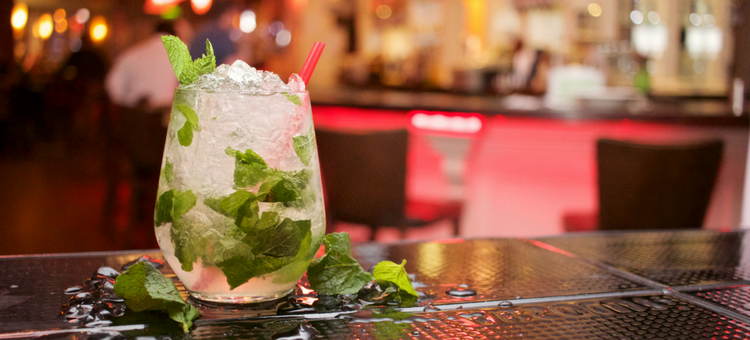
Properly presenting and preparing drinks may seem extremely obvious, but it doesn’t hurt to make sure you’re doing it right. Take the time to properly prepare and present your drinks to help change your customer’s cocktail experience.
Ice, Ice, Baby
Cubed, cracked, and shaved. These are some of the basic forms of ice and knowing when to use each comes in handy. Cubes are standard and can be used for almost any drink. Due to larger size, cubes melt slower and will “water down” the drink much slower than other forms of ice. Cracked ice is smaller and therefore melts faster. It is typically used for frozen drinks because it blends better and easier than cubes. Shaved ice is much thinner and is what is typically found in snow cones. It will be used much less than other forms but still can be used for some delicious cocktails.
Is Bigger Better?
When it comes to cocktails, bigger isn’t necessarily better. As long as two smaller sized cocktails equal the price of a bigger one, your customers shouldn’t have a problem. Here’s why. Smaller cocktail glasses keep drinks colder for longer. Using a 3 to 4 ounce cocktail glass will keep the last sip of a drink going down as smooth as the first. Also it is much easier to drink from a smaller glass than a larger one. Over-sized cocktail glasses will have customers balancing their drink from the table to their mouths and may even have some of it spilling over the sides.
Proper Glass Choice
Choosing the proper glass for your drinks is an important aspect that can sometimes be overlooked. Stronger mixed drinks, like gin and tonics, should go in a 10 to 12 ounce straight sided glass called a highball glass. Drinks of this sort require less mixer and therefore need less space. Weaker juice based drinks like screw drivers should go a 14 to 16 ounce highball glass called a Collins glass. The next two tips are easy to remember. A sour glass should be used for drinks ending in sour. Sour glasses are a shorter version of a champagne glass and allow customers to keep the drink colder for longer by holding it at the bottom of the glass. An “on the rocks” drink should be served in a glass known as a rocks glass. A coupette glass should be used for Margaritas and Daiquiris. The broad rim allows for it to be dipped into salt or attaching a piece of fruit like a lime. Last but definitely not least, a Martini glass should be used for what else but a Martini; along with any other shaken or strained cocktail.
Bling Bling
Nothing will help the presentation of a drink more than some garnishes. This simple little helper can be the finishing touch to an excellent cocktail. Additions like some salt on the rim, limes, fancy straws, olives, cherries, and lemons can all spice up your drinks and serve as a bit of recall and recognition for your customers.
Tools of the Trade
Make sure your bar and bartenders are completely stocked with the essential tools to make the quality drinks your customers deserve. This includes a jigger for properly measuring the alcohol contents of each drink. Get a shaker and strainer to make sure the contents of your drinks are equally mixed. Also a long handled spoon is essential for drinks that are stirred instead of shaken. These tools can eliminate problems such as “watered down” drinks or drinks that are too strong.
Glass and Drink Temperature
A simple and easy step to take to make sure your drinks are good to the last drop is to make sure the temperature of the glass is the same or close to the same as the temperature of the drink. For a drink served cold, put the glass in the freezer or pour cold water or ice in the glass. And for warm drinks, pour hot water in the glass while the drink is being prepared. This will keep cold drinks cold for longer and warm drinks warm for longer.
Quality Quality Quality
If your restaurant isn’t serving college undergrads every night then you should be avoiding low shelf liquors. You don’t necessarily have to have the best of the best, but you should be able to find some middle ground. A low grade bottle of liquor really can change the taste of a drink compared to a higher grade bottle.
These simple tips can change your customer’s cocktail experience and help you gain some ground against your competitors. Spend a little extra time and money and do cocktails right.
If you are looking to snazz up your drink menu, try the new trend of edible cocktails and don’t forget to promote them on drink menus!
What are you doing to add some jazz to your drink menu?
[fl_builder_insert_layout slug=”whitepaper-signup-module-golden-book-of-upselling”]
